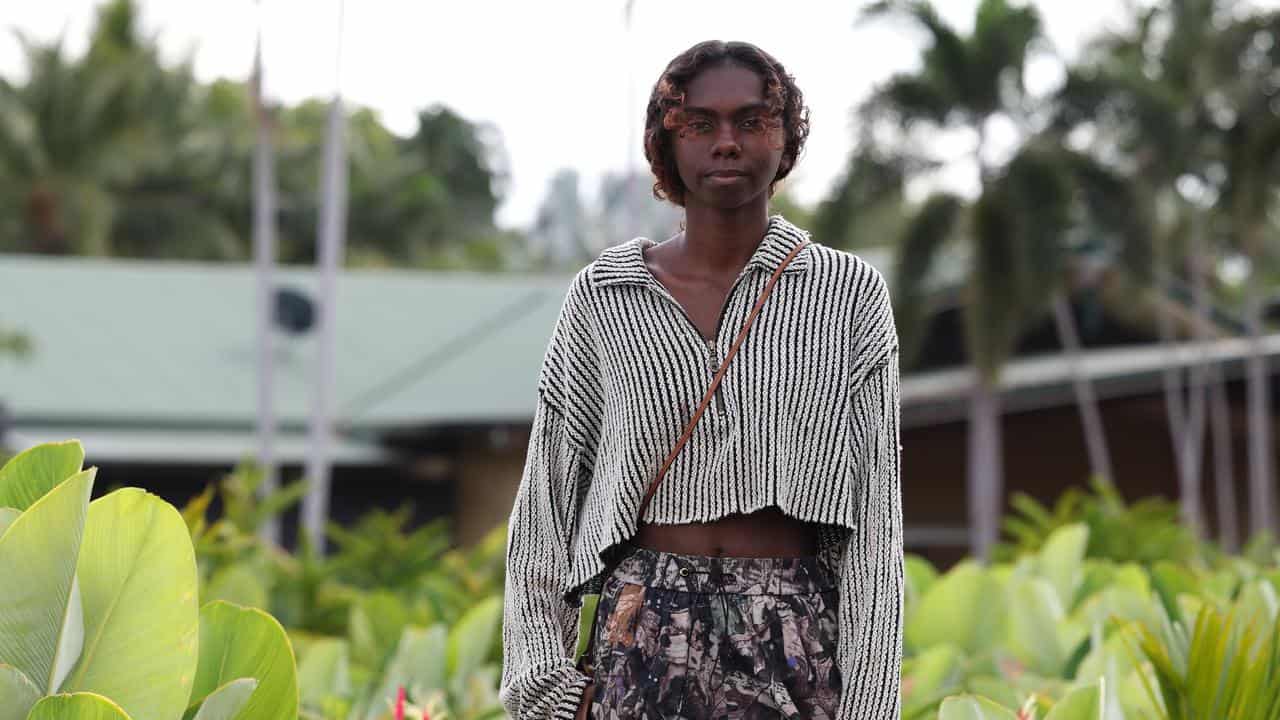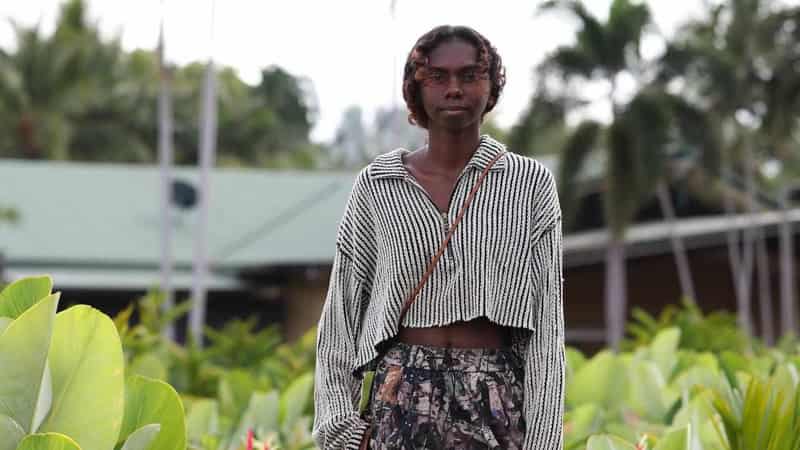
Ancient practices from across the Indian Ocean could preserve stories decaying in a remote Northern Territory community on the Arafura coast.
The Bábbarra Women’s Centre sits amid bauxite boulders on a pandanus-lined shore next to turquoise waters.
It is on Kunibídji country, 500km east of Darwin, where a small group of women create textiles that tell their stories of life, animals, flowers and the yawkyawk, the mermaid spirit.
Since the centre opened in the late 1980s as a women’s refuge, it has been a place for economic and cultural security for women and children in Maningrida.
“It’s beautiful there,” said Bangardidjan Cindy Rostron.
The Kune, Dalabon, Rembarrnga woman grew up watching her aunts and mother share stories through etching, lithography and screen printing; stories she now wears in elaborate gowns along some of the world’s most renowned runways.
“I've grown up watching them, making like the dream-time story,” the model said.
“And story and history, I think it's really important for us sharing culture by doing art.”

Ms Rostron is one of six women artists who will head to Bangalore in India for a dual exhibition called Karri-Djarrk-durrkmirri (we work together) along with Bangalore's Tharangini Woodblock Studio.
But the journey is not just about her mother's work, as Ms Rostron also has Indian heritage.
"My father wanted me to go to India, because there's a history," she said.
"My dad, my father, he's half Indian ... it's good for me to go there and experience the knowledge and culture and learn."
The two art centres share a commitment to equality and sustainability while creating space for local women artists, but much like Bábbarra, the Bangalore studio has passed art along maternal lines since the mid 1970s.
Art Centre manager Ziian Carey said the cross-cultural exhibition initially began with 10 lithography carvings from Bábbarra archives sent over to become wood blocks, but has expanded over the past 18 months to more than 70 carvings.
She said a number of the original linos from when the art centre first opened had begun to fall apart, but the method of wood carving could preserve these stories for generations.
Twenty-one unique textiles made from 77 individual woodblocks will be displayed at Bangalore International Centre from October 4 to 13.
The collection of textile artworks will then travel to Darwin to be exhibited in 2025.
For some of the artists it will be their first time overseas.
Kuninjku woman and artist Bulandjan Abigail Namundja will leave one of the remotest communities in Australia for the most populated in the world, but despite it being her first international journey, she says she is ready to explore.
13YARN 13 92 76
Lifeline 13 11 14









